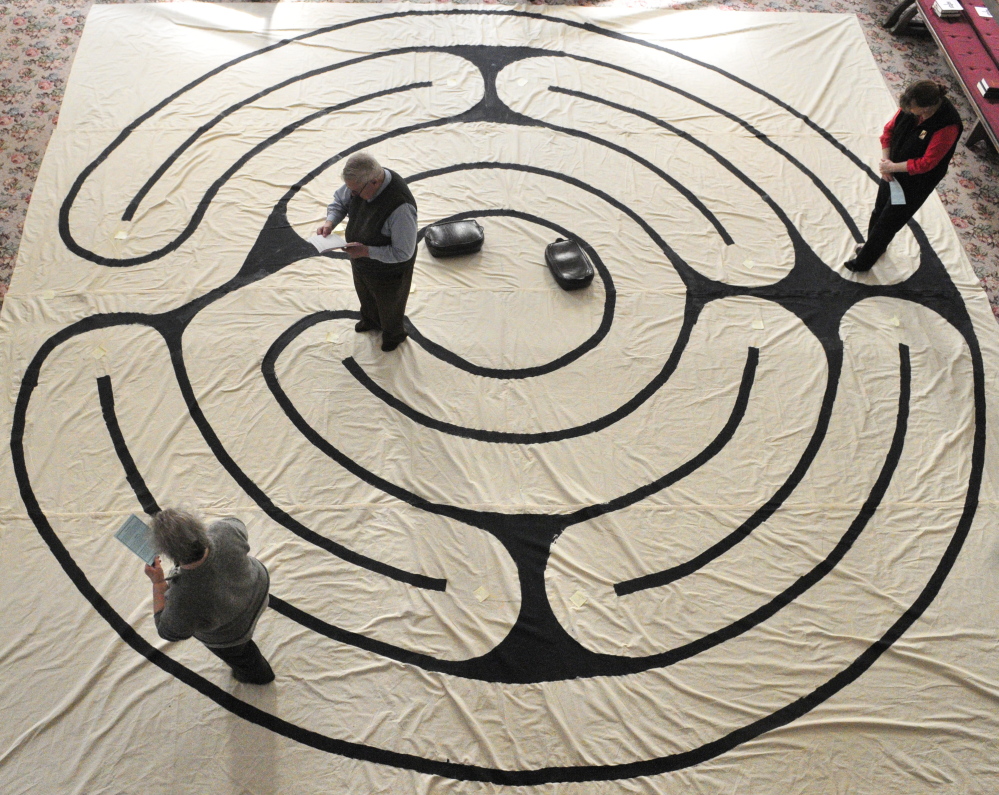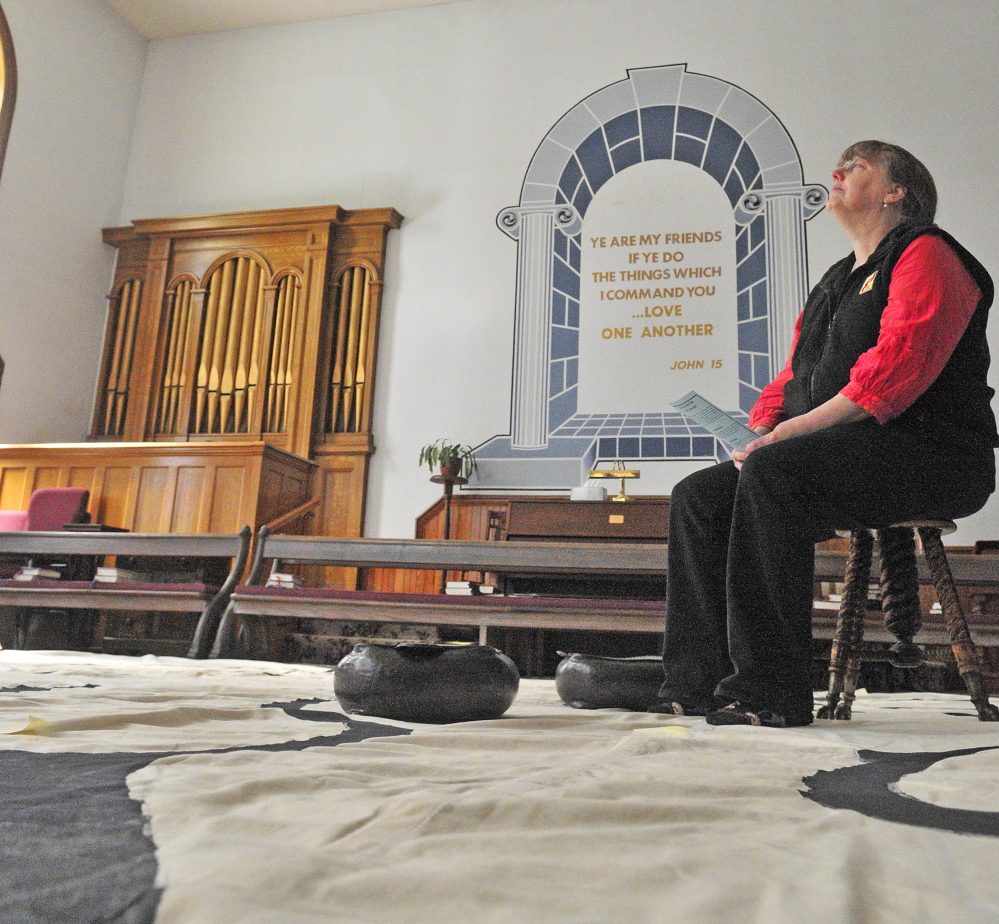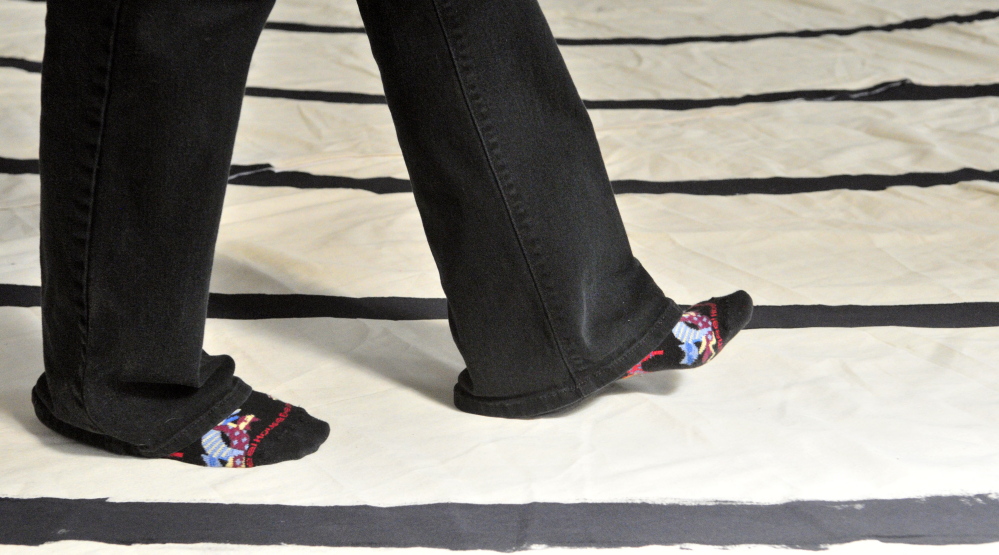WINTHROP — Suzan Katzir’s faith journey has been marked by open-mindedness.
She divorced a rabbi, and on Good Friday she was in the Quaker church where her Episcopal congregation meets.
On the day that commemorates the Christian belief in the crucifixion and death of Jesus Christ, there was a new sight at the Winthrop Center Friends Meeting House where St. Andrew’s Episcopal Church meets: a walkable labyrinth, which has been part of a Christian tradition for centuries.
Labyrinths look like mazes, but with just one path to the middle. The Winthrop labyrinth has five circuits and 14 stations corresponding to the stations of the cross, a series of images depicting the journey Christ is believed to have taken from when he was condemned by Pontius Pilate to his crucifixion. For the first time this year, the labyrinth was laid out by Katzir and fellow St. Andrew’s parishioner Jenifer Lewis at the church, which meets at the Quaker meeting house on Winthrop Center Road.
The labyrinth was meant to be an act of open-ended meditation. Katzir, of Hallowell, is Jewish and came to the church after divorcing a rabbi in Auburn, who she said “got custody of the synagogue.” She said the congregation’s effort to let her “into their hearts” helped fuel the project.
“I get to be what I am and I get to enable people’s spirituality, which has been part of the fun of this,” Katzir said.
Labyrinths show up in Greek mythology and on ancient pottery and jewelry, but for Christians, walking through one is a medieval tradition. Instead of taking a dangerous trip to Jerusalem, worshipers often visited Chartres Cathedral in France to walk the most famous labyrinth of that time, built in the early 13th century. It still draws pilgrims today.
In Winthrop, it took a reporter eight minutes to complete the labyrinth, and walkers could take along a booklet with the prayers that correspond to each cross station. However, no particular faith was required, and people were encouraged to meditate while walking with no reading material if they wanted.
Katzir hopes to lend the labyrinth to other groups, and she said they need not be Christian — she said a Wiccan friend may be interested — or even religious, and Lewis said “as long as people take off their shoes,” the faith of people using it doesn’t matter.
“It’s beyond that,” Lewis said. “We’re spiritual beings having a human experience, and religion, sometimes, can have very little to do with that.”
And the labyrinth walk can mean different things to everyone: The church’s retired vicar, the Rev. James Gill, of Winthrop, said he tried to identify with Christ by applying parts of his journey to his own life. Lewis said she thought of her daughter-in-law, who she introduced to using labyrinths as a part of faith.
“It’s so democratic,” Gill said. “You don’t need a theological degree or anything to walk.”
Michael Shepherd — 370-7652
Twitter: @mikeshepherdme
Send questions/comments to the editors.





Success. Please wait for the page to reload. If the page does not reload within 5 seconds, please refresh the page.
Enter your email and password to access comments.
Hi, to comment on stories you must . This profile is in addition to your subscription and website login.
Already have a commenting profile? .
Invalid username/password.
Please check your email to confirm and complete your registration.
Only subscribers are eligible to post comments. Please subscribe or login first for digital access. Here’s why.
Use the form below to reset your password. When you've submitted your account email, we will send an email with a reset code.